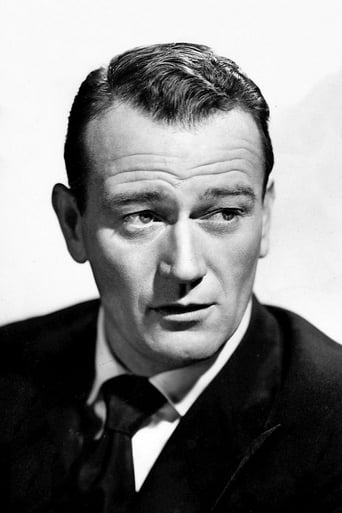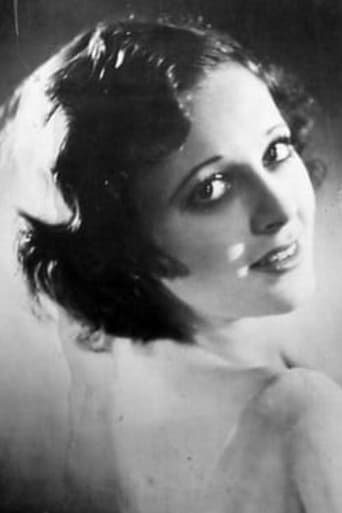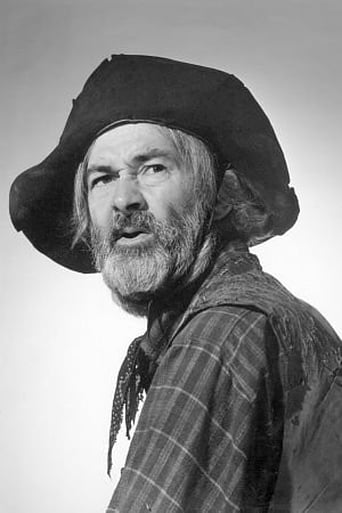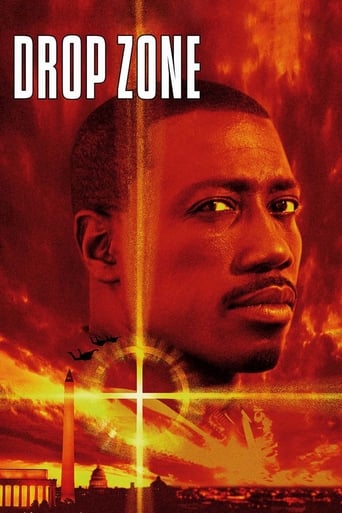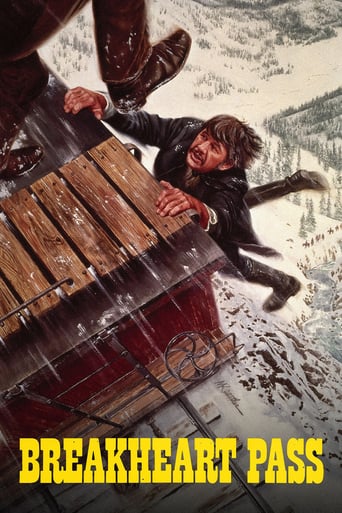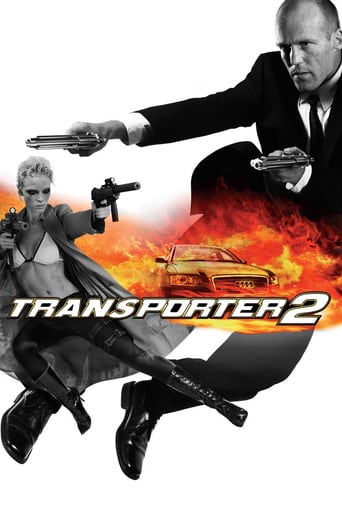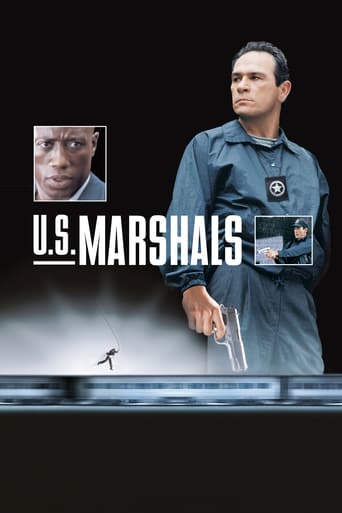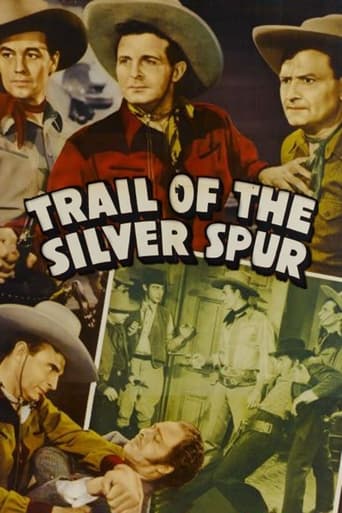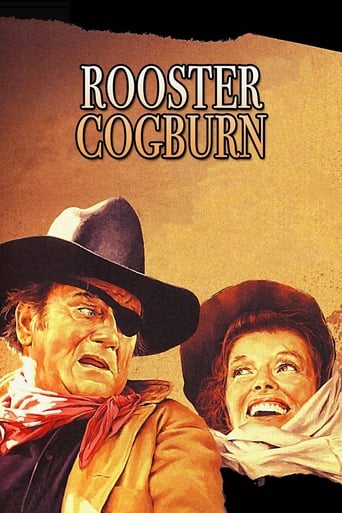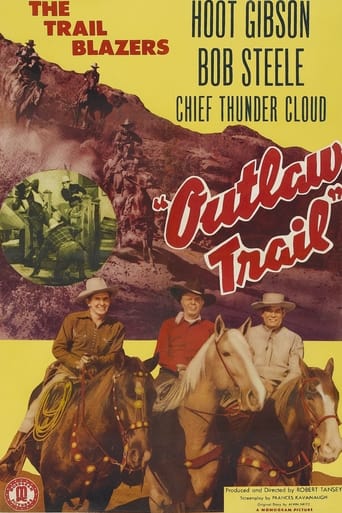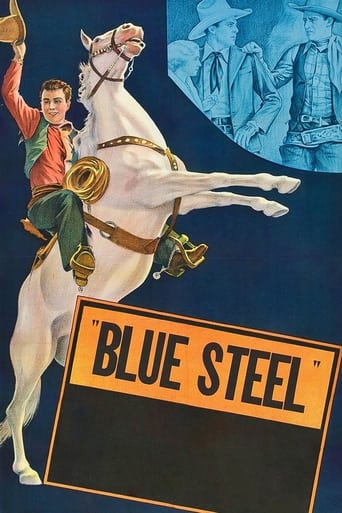
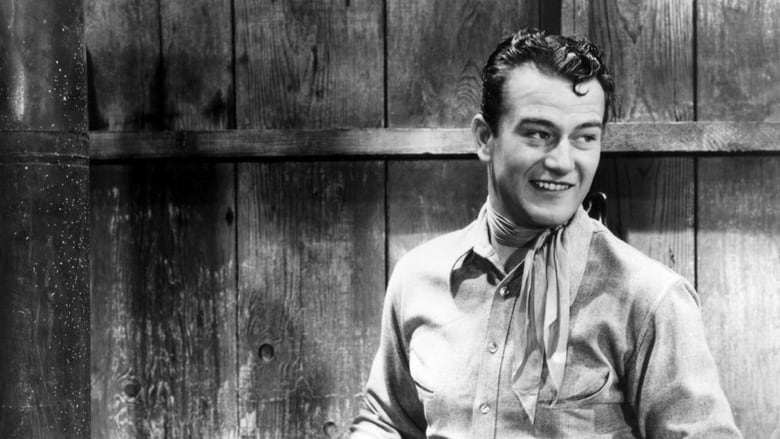
 Watch Now
Watch Now






Blue Steel (1934)
 Watch Now
Watch Now






When Sheriff Jake sees a man at the safe and then finds the payroll gone, he trails him. Just as he is about to arrest him, the man saves his life. Still suspicious, he joins up with the man and later they learn that Melgrove, the towns leading citizen, is trying to take over the area's ranches by having his gang stop all incoming supply wagons. With the ranchers about to sell to Melgrove, the two newcomers say they will bring in provisions.
Watch Trailer
Cast


Similar titles
Reviews
To me, this movie is perfection.
Boring
It's complicated... I really like the directing, acting and writing but, there are issues with the way it's shot that I just can't deny. As much as I love the storytelling and the fantastic performance but, there are also certain scenes that didn't need to exist.
The film never slows down or bores, plunging from one harrowing sequence to the next.
" . . . gold field ever discovered," Betty Mason breathlessly reveals to her fellow townsfolk, each of whom also own a geologically unprecedented gold ranch on the side as BLUE STEEL concludes. BLUE STEEL has ALL the hallmarks of early John Wayne flicks. First of all, his character is named "John," since it took Wayne about 20 years as a "movie star" to remember that in a movie he shouldn't be answering to either "Marion Mitchell Morrison" (the revised name on his birth certificate) or "Duke" (his childhood doggy\best friend's handle), OR even "John" as in "John Wayne" (a random character in a biography he was reading when the studio demanded he think up a new moniker), but maybe something like "Sam Spade" in one flick and "Rick Blaine" in the next. Secondly, some or all of the local Law take John for the REAL Bad Guy. Third, the actual crime kingpin is also the community's leading businessman. Fourth, this rich geezer fancies the young chick John is crushing on, so the geezer kills her father for the family fortune, and informs her that Dear Old Dad Is Dead while proposing to her in the same breath. In the 1930s, this was a winning film formula.
This "Blue Steel" has no connection with the Jamie Lee Curtis vehicle from the late eighties. This one is one of the many Western B-movies which John Wayne made during the mid-thirties. The title, in fact, seems fairly meaningless, and the film is also sometimes referred to as "An Innocent Man", a title which makes more sense in the context of the plot. In most of his Westerns made in this period, Wayne plays characters with the Christian name John, probably a deliberate attempt by the studio to create a distinctive identity for him. Here he plays John Carruthers, an undercover US Marshal who is in a small Western town investigating a string of robberies committed by the "Polka Dot Bandit", so called from the distinctive neckerchief he wears. While in town, however, Carruthers uncovers a completely different crime. A leading local citizen named Malgrove has discovered that, unknown to anyone else in town, there is a rich vein of gold underneath the area. Malgrove and a gang of bandits have therefore formed a plan to force the local people out of town so that he can purchase their land for a pittance and claim the gold for himself. The bandits have cut off all food supplies, leaving the townspeople with the choice of either fleeing or starving to death. (It is never explained why the town was established in a remote desert location with no local farms or other means of feeding itself). It falls to Carruthers to try and thwart this dastardly plot with the help of the local sheriff. The sheriff, who is unaware that Carruthers is a US Marshal, wrongly believes him to be the Polka Dot Bandit, but (again for unexplained reasons) fails to arrest him."Blue Steel" is typical of many of the Westerns made by "Poverty Row" studios during the thirties, and shares many of their flaws- a confusing or irrational plot, some dodgy acting and some badly done action sequences, especially the fist fights. (Most of them seemed to feature at least one punch-up between the hero and his antagonists- perhaps the censors would not have been happy with too much gunplay, which was the more common way of settling disputes in the Old West). It lacks the striking landscape photography which distinguishes another Wayne Western from 1934, "The Trail Beyond". Some of the stunts are well performed- the cast includes the famous stunt man Yakima Canutt, a close friend of Wayne- and there are occasional moments of excitement, but this is really one of those films that is only remembered today because its leading man went on to become a Hollywood icon. 4/10
What a wacky opening scene. The thunderstorm's got to be the loudest on record-- and why is Wayne sneaking into the hotel lobby. I guess he doesn't want to pay for a room. Then there are the newly-weds right out of the aw' shucks school of acting. And most curiously of all-- how did they get the groom's"I couldn't find it" snippet past the public watchdogs. This amounts to an astonishing innuendo, and no doubt one for the boys-- in the movie, that is. Probably there are more than a few audience 10-year old's still puzzling over that one. In all likelihood, it was someone's private joke that made it to the screen on a bet.Lone Star popped for some great location photography. The boys get to ride around the Alabama Hills with the scenic Southern Sierras in the background. The story doesn't make a lot of sense, but who cares, especially when the canyon explodes in a really great effect worthy of an A production. Also, some good crowd scenes of ordinary looking people. When they talk about getting forced off their homesteads, I expect more than a few folks in 1934 wished they had a Wayne on their side.As others point out, this looks like an early stage in the evolution of Hayes' unforgettable "Gabby" character. He's not called that, still the crusty old coot is definitely coming out. How delightful the Gabby-Wayne pairing proved over the years, especially in their masterpiece Tall in the Saddle. Wayne always seems genuinely amused by the ornery Gabby. Watch some of his reactions here. Those broad grins are not acting. Great final shot that still brings a tear to the eye.
This western was the second significant film in the development of George "Gabby" Hayes' cantankerous character who emerged as the old whiskered comedy sidekick in the Hopalong Cassidy films. Gabby plays it straight here as a sheriff who even shoots a baddie. The only "funny" things about him are the hole filled hat he wears, his big walrus mustache, & his typical slurred speech. The acting is good all around, except for Eleanor Hunt, who has that cute Clara Bow look, but she's brought that old silent film style to this movie. I love the old B westerns, & aside from my favorite, Hopalong Cassidy, to me the early John Wayne series is the next best. This is not one of Wayne's best, but it's a must-see for Gabby Hayes fans. I rate it 6/10.



